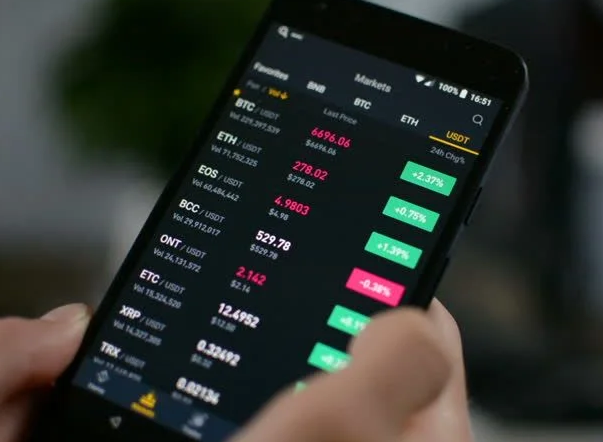Robinhood has launched lawsuits against gaming regulators in New Jersey and Nevada, arguing that its newly reintroduced sports event contracts are federally compliant and should be allowed to continue without state interference. The move comes as thousands of customers brace for potential disruption.
Legal Fight Spills Into Federal Court
Robinhood filed nearly identical suits this week, targeting the New Jersey Division of Gaming Enforcement and the Nevada Gaming Control Board. The cases were lodged in federal court, with the company seeking injunctions to stop both states from taking action while the contracts remain active.
The timing wasn’t accidental. On the very same day, Robinhood announced the return of its prediction markets, this time linked directly to college and professional football. Within hours, the legal filings were made public.
For regulators, the issue is simple: sports betting is already heavily controlled at the state level. But Robinhood insists its contracts are commodities futures, overseen by the Commodity Futures Trading Commission (CFTC). The difference matters. One puts the contracts under state gambling laws. The other keeps them in federal financial regulation.

What’s at Stake for Customers
According to the company, more than 60,000 customers in just two states could see their access disrupted. That’s a sizable figure for a pilot product.
One person close to the case noted that Robinhood has already invested millions into building out the infrastructure through its CFTC-registered arm, Robinhood Derivatives. Cutting access now, the lawsuits argue, would not just hurt Robinhood but also individual investors who have already placed contracts.
“This is a decisive step forward in our mission to democratize finance,” a Robinhood spokesperson said. The phrasing may sound familiar—the company has long marketed itself on making trading accessible to everyday investors. But now, the promise is being tested in an area where gambling and finance collide.
Prediction Markets or Sports Betting?
The distinction between a sports event contract and a sports bet is not always clear. To some regulators, it looks like a thinly veiled attempt to repackage betting under another name. To Robinhood, however, the products function like any other market-based derivative.
Contracts are settled based on specific outcomes—for example, whether a football team wins or loses. That resembles betting, but Robinhood frames it as a financial instrument tied to data.
Here’s a quick snapshot of how these contracts compare with traditional sports betting:
| Feature | Sports Betting (State Regulated) | Event Contracts (CFTC Regulated) |
|---|---|---|
| Oversight | State gaming regulators | Federal CFTC |
| Settlement | Based on game outcome | Based on contract specifications |
| Customer Access | Sportsbooks, casinos, apps | Futures trading platforms |
| Legality | Varies by state | Uniform under federal regulation |
That table captures the crux of the fight. If the courts side with Robinhood, the company could bypass state gambling hurdles entirely. If not, its sports event contracts could be banned in large swathes of the country.
A Clash of Regulatory Philosophies
Nevada has long been considered the gold standard of sports betting regulation. New Jersey, meanwhile, was one of the first states to push aggressively into online sports wagering after the Supreme Court struck down a federal ban in 2018.
Both argue they have a duty to protect consumers from predatory products. They worry that framing betting as trading could erode safeguards built over decades.
Robinhood’s counter is straightforward: it already operates under strict federal oversight. Why should states interfere with a market the federal government has expressly allowed?
It’s a clash not just of legal interpretations but also of regulatory philosophies. One sees betting as entertainment with consumer risks. The other sees financial contracts as investment products that should be open nationwide.
Timing Raises Eyebrows
Critics point out that Robinhood’s timing—launching new football contracts right before suing regulators—was a calculated gamble in itself. By moving quickly, the company caught state agencies off guard and built early momentum among customers before potential bans could take hold.
For some, it’s a clever strategy. For others, it smacks of provocation.
Still, Robinhood has been here before. From commission-free trading to cryptocurrency access, the company has often pushed boundaries first and dealt with regulators later. This latest clash continues that tradition.
Wider Implications Beyond Two States
Though the lawsuits focus on New Jersey and Nevada, the outcome could ripple across the U.S. If Robinhood wins, it sets a precedent that CFTC-regulated contracts can trump state gaming laws. That would effectively open the door for nationwide sports event contracts without state approval.
If it loses, other states may follow with enforcement threats, potentially boxing Robinhood out of a lucrative market before it gains traction.
Analysts see this as part of Robinhood’s broader effort to expand beyond stock trading, diversifying revenue streams in a competitive market. After years of being defined by meme stocks and volatile crypto runs, the company is now eyeing sports-linked products as its next big bet.
Customers Left in the Middle
For everyday users, the legal technicalities matter less than whether they can keep trading. Many of the 60,000 potentially affected customers may not even realise their contracts are now tied up in federal litigation.
One Nevada-based trader told a local outlet he had only just signed up before hearing about the lawsuits. “I don’t care if they call it a contract or a bet,” he said. “I just don’t want to lose access mid-season.”
That sentiment sums up the challenge. Customers want stability, regulators want control, and Robinhood wants growth. How the courts reconcile those interests could define the next chapter of prediction markets in America.








